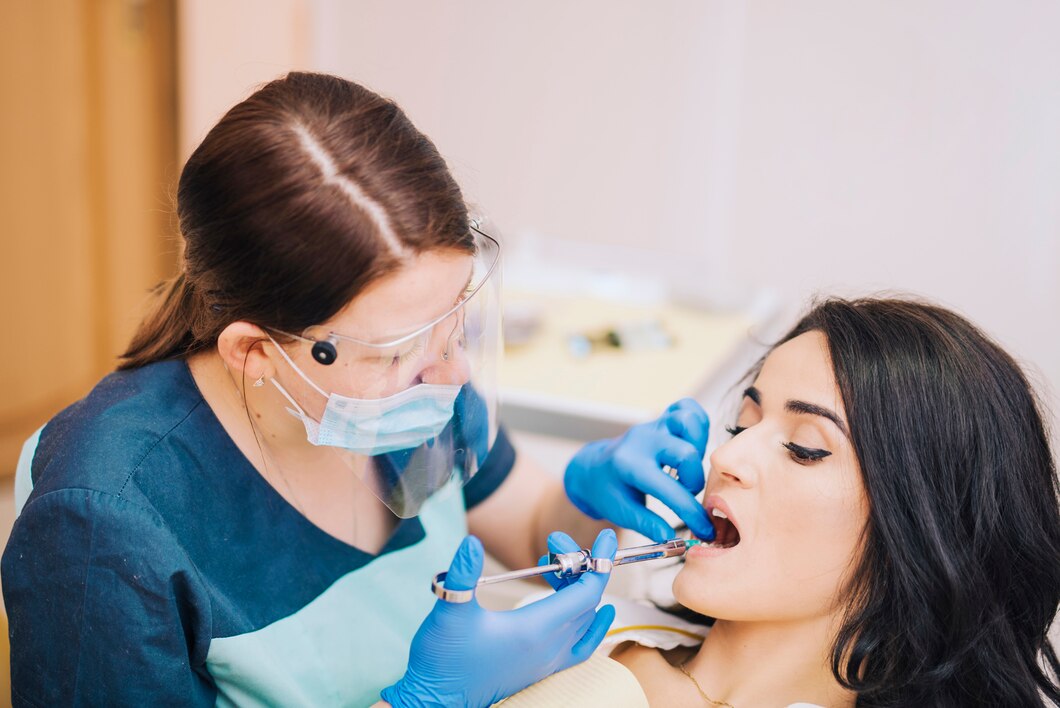Don’t we all wish we had that perfectly looking, straight-toothed smile? But let’s be real, not everyone is blessed with these naturally flawless teeth. That’s where solutions like dental braces come in to save most of our day. Braces are a common choice for those with crooked teeth or bite issues. They’re designed especially to straighten your teeth out and give you that Hollywood-worthy grin. In this blog, we’re going to break down everything you need to know about these. We will cover how they work, and what different kinds are out there. And of course, the question on everyone’s mind – how much is this smile makeover going to cost me? Whether you’re just exploring braces for yourself or someone else, stick around as we explore the world of dental braces.
What Actually are Dental Braces?
Braces are devices that orthodontists put on your teeth to straighten them. These braces use gentle, steady pressure to move your teeth into the right positions over time slowly. You can get traditional metal braces or ones made from ceramic material or clear, almost invisible plastic.
Along with making your teeth straight, they can also help fix many other problems with your teeth, examples include twisted teeth, teeth that are too close (crowded) or have big gaps between them or problems regarding how your top and bottom teeth fit together when you bite down.
Types of Dental Braces
You have different choices when it comes to braces. The ideal type for you depends on a few things like your teeth problems and how severe it is along with what you will personally prefer.
-
Metal braces
Traditional metal braces are what most people picture when they think of braces. They use stainless steel brackets that get glued onto each tooth, along with a metal wire that will run across the brackets. The small rubber bands called ligatures hold the wire in place on the brackets. With time, the wire puts pressure on your teeth to eventually shift them into better alignment.
Your orthodontist will adjust the wire from time to time to keep your teeth guided. Now, there’s no denying metal braces generally give off a little statement look. But that’s part of their charm! They’re the OG, a tried and tested tooth-straightening device that has been making people smile a little more. A little brace face never hurt anybody, right?
-
Ceramic dental braces
Ceramic braces work like regular metal braces, but the factor that makes them different is that they are mostly tooth-coloured instead of the eye-catching silver-coloured. All the components including the brackets, wires, and tiny rubber bands that hold the wire are made to resemble your natural tooth shade which also makes them much less visible when you smile.
However, if you look very closely, you can see them but they tend to blend in better compared to the shiny metal ones. With all the advantages, there is one demerit to these braces – they are more delicate and can break more easily than metal ones. So you have to be a little more careful with ceramic braces.
-
Lingual braces
Lingual braces get attached to the back of your teeth rather than the front but work mostly like traditional braces. Most folks who opt for these braces do so because they want to keep their brace situation on the down low. With the brackets and wires hidden behind your teeth, making it practically invisible and way harder for others to even notice that you’ve got actual dental braces in your mouth.
-
Self-ligating braces
Self-ligating braces are the upgraded version of regular metal braces. From the outside, they look pretty similar with the brackets and wires. But there’s one main difference – instead of using those tiny rubber band things called ligatures to hold the main archwire in place, self-ligating braces have a special built-in clip system to do the job.
-
Clear aligners
Also known as invisible braces, these refer to clear plastic aligners that straighten your teeth without any metal brackets or wires. In place of having braces attached to your teeth, you get a whole series of custom-made clear trays to wear. You wear one set of the aligners for around two weeks, then swap it out for the next set in the series.
Each new tray is slightly different, applying gentle pressure to gradually shift your teeth into place. Unlike regular braces that are permanently attached, you can remove these whenever you need to. But it is recommended to keep them in for at least 22 hours per day. The only times you should take them out are for eating, drinking anything besides water, and during brushing and flossing.
What Factors to Consider Before Choosing the Braces for Yourself?
Here are some of the factors you should be clear to decide on your braces:
-
The severity of your teeth problem
If you’ve got a significant misalignment or bite issue going on, then traditional metal braces are likely going to be your best option. Those classic metal ones have the power to fix even the most stubborn and severe cases of crooked, overlapping, or gapped teeth.
Also, clear aligner trays like Invisalign work better for mild to moderate crowding or bite problems. Most orthodontists agree with this that clear aligners can handle mild to moderate overbites or underbites. At the end of the day, you’ll want to get a personal assessment from your orthodontist.
-
Maintenance and care
To ensure your straightening process goes smoothly, you’ve got to be diligent about maintaining a hygiene routine every single day without fail. And not a half-hearted effort either – we mean really getting in there to remove all the gunk. It’s a bit more work, but a small price to pay for avoiding a mouthful of problems down the road. Your orthodontist will drill this into you, but it’s worth the reminder.
-
Aesthetic and budget
Take the help of your orthodontist who will guide you in finding an option that delivers good results while working within your budget and desired aesthetic. More affordable dental braces may be recommended for extensive issues, while mild cases may allow splurging a bit more on aesthetics.
How Much Does the Braces Cost?
Among the many, the cost of dental braces depends on the cost of orthodontics, which again is based on factors like duration, type of treatment, complexity of the treatment and many more. However, we can provide a ballpark figure that may help you.
| Type of Braces | Cost of Dental Braces in Australia |
| Metal Braces | $6,000 – $9,000 |
| Ceramic Braces | $6,500 – $10,000 |
| Lingual Braces | $9,500 – $15,000 |
| Clear Aligners | $6,500 – $9,500 |
Conclusion
A confident smile that will be yours forever! However, the procedure is something that is patiently endured but can make a big difference in the well-being of your teeth. At Ashburton Dental Centre, you will not walk alone through a tedious process but smile through it.




